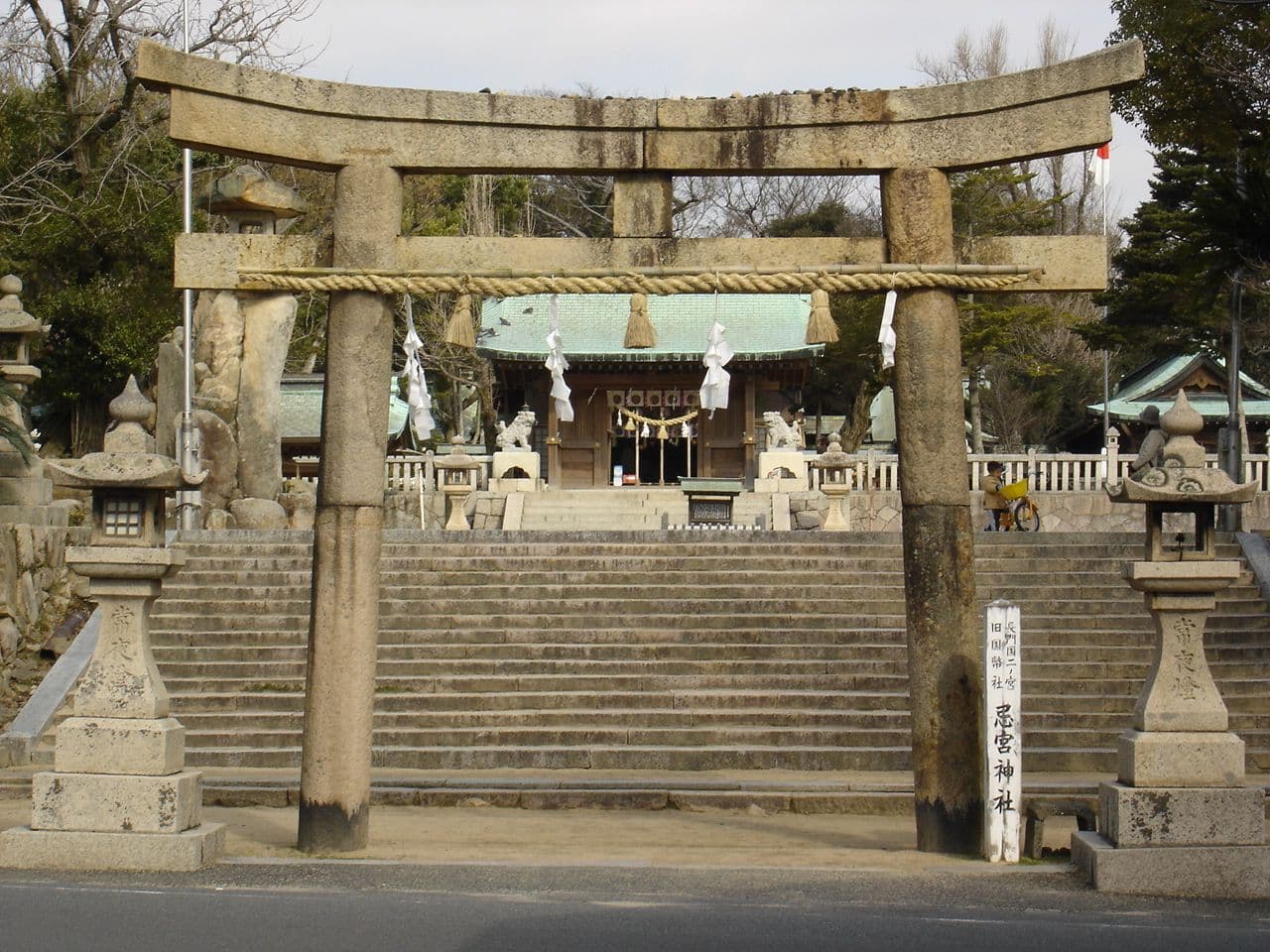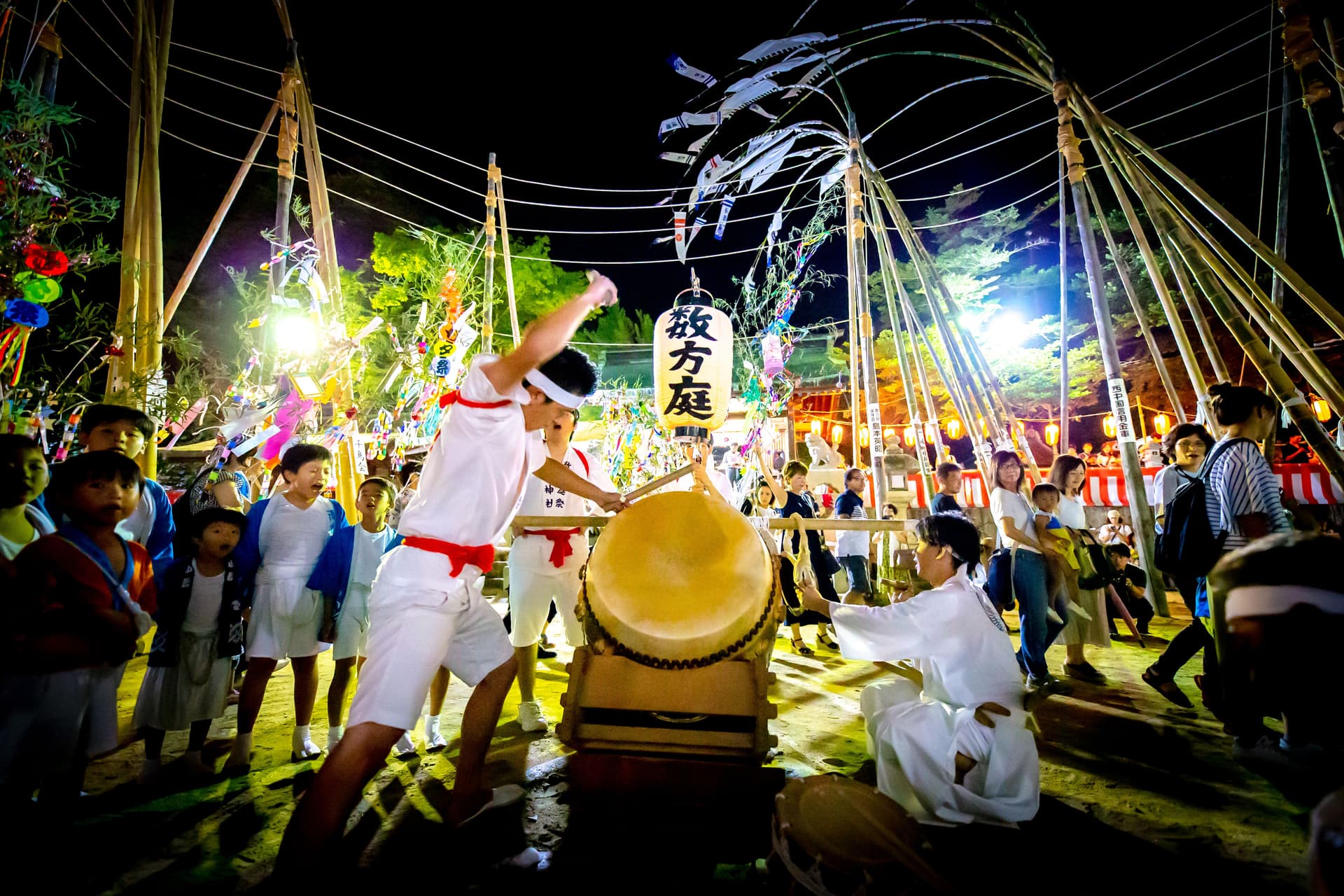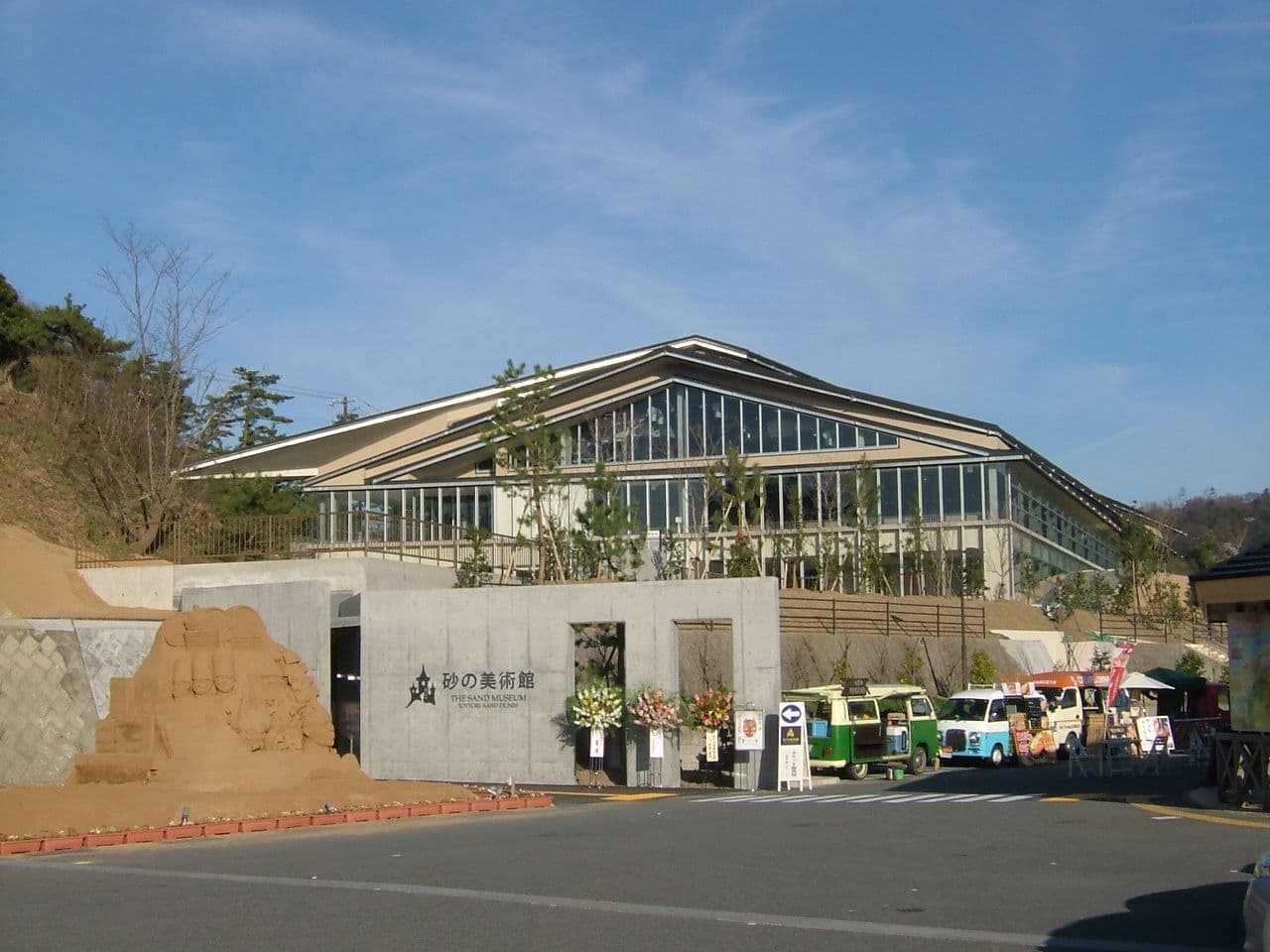
Iminomiya Shrine
忌宮神社- Chōfu StationSan’yō Main Line
- 6 minutes bus drive to Jyoukamachichoufutoriimae
- Walk 7 minutes
Iminomiya Shrine, located in the Chōfu area of Shimonoseki, is one of the oldest and most revered Shinto shrines in western Japan, with a legacy spanning 1,800 years. The character 'Imi' (忌) signifies purity and sanctity, reflecting the shrine’s deeply sacred nature - a place of utmost spiritual cleanliness and divine presence.
Historical Origins
The shrine stands on the historic site of Toyoura-no-Miya, the palace where Emperor Chūai, the 14th emperor of Japan, governed for seven years while preparing for a military campaign to subdue the Kumaso clans in Kyushu. According to legend, the Emperor later moved to Kashii in present-day Fukuoka but passed away just a year later. Empress Jingū, concealing his death, instructed the loyal minister Takeuchi no Sukune to return his remains to Toyoura, where he was temporarily buried about 500 meters south of the present-day shrine.
Despite being pregnant, Empress Jingū led a bold campaign against Silla—a Korean kingdom said to have been inciting unrest among the Kumaso. After her victorious return, she enshrined Emperor Chūai’s spirit at Toyoura-no-Miya, marking the founding of Iminomiya Shrine.
In 728, under Emperor Shōmu, a divine oracle led to the enshrinement of Empress Jingū's spirit from Kashii Shrine in the shrine's central hall. Emperor Chūai and their son Emperor Ōjin were also enshrined alongside her. Originally, the shrine consisted of three separate halls—Toyoura-no-Miya, Toyōakari-no-Miya, and Imimiya—but a fire in the medieval period destroyed the first two, leading to their consolidation into the current Iminomiya Shrine.
Sacred Legends and Ritual Sites
One of the shrine’s most iconic natural features is the Ginkgo Tree of Sukune, believed to have been planted by Takeuchi no Sukune himself - a grand minister who served multiple emperors. The ancient tree still bears fruit, which is believed to bring blessings of good fortune and prosperity to descendants.
Another important ritual center is the Oni-ishi ("Demon Stone"), said to mark the burial site of Jinrin, a Silla general defeated at Toyoura. Due to his fearsome appearance, the site became known as Oni-ishi. From August 7 to 13 each year, the Suhoteisai festival takes place here. Boys carry banners, girls hold lantern-adorned bamboo stalks, and the community dances to the rhythm of drums and gongs around the stone.
Cultural and Mythological Significance
Nearby, a monument commemorates the introduction of silkworm eggs (蚕種, "sanshu") to Japan. According to the Sandai Jitsuroku, Prince Kōman, a descendant of Emperor Qin Shi Huang of China, arrived in Japan during Emperor Chūai's reign and offered silkworm eggs—marking the beginning of sericulture in Japan.
The shrine grounds are also home to a National Natural Monument, a lush, untouched forest that surrounds the sacred space.
Off the coast of Chōfu lie the Manju and Kanju islands, considered sacred and mythological. Legend holds that Empress Jingū, before her Silla campaign, received two magical tide-controlling jewels from the sea god Sumiyoshi Ōkami. When she returned them to the sea, they transformed into these two islands.
Subsidiary Shrines and Spiritual Sites
Within the shrine complex is Arakuma Inari Shrine, established in the early 1800s when Mōri Motoyoshi, the 11th lord of the Chōfu Domain, visited Kyoto’s Fushimi Inari and brought back a divided spirit of the deity. It was relocated to its current site in 1848 and has since become popular for prayers related to success and finding lost items.
Another revered symbol is the Saka-matsu ("Upside-Down Pine"), which Empress Jingū is said to have planted upside-down as a divine vow before her campaign. She pledged that if her cause was just, the tree would not wither. Though the original tree was destroyed in a fire during the Meiji era, its roots remain enshrined, and new pines have since grown around it.
Sumo Museum and Cultural Treasures
The shrine is closely associated with sumo culture. The late Hanaregoma Oyakata (former ōzeki Kaiketsu, from Yamaguchi Prefecture) regularly visited the Mikka-Zumō festival at Arakuma Inari Shrine. In honour of this connection, a Sumo Museum dedicated to the Hōkōma stable was opened on the 10th anniversary of the shrine’s reconstruction.
Related topics
At Hey Japan!, we strive to keep the places listed on our website as current as possible. However, it is important to note that location owners or management may make changes to their plans, including canceling events, altering opening times, or modifying admission requirements, without prior notice. To ensure that you have the most accurate information, we recommend checking official websites before visiting any location.
Last Updated:













